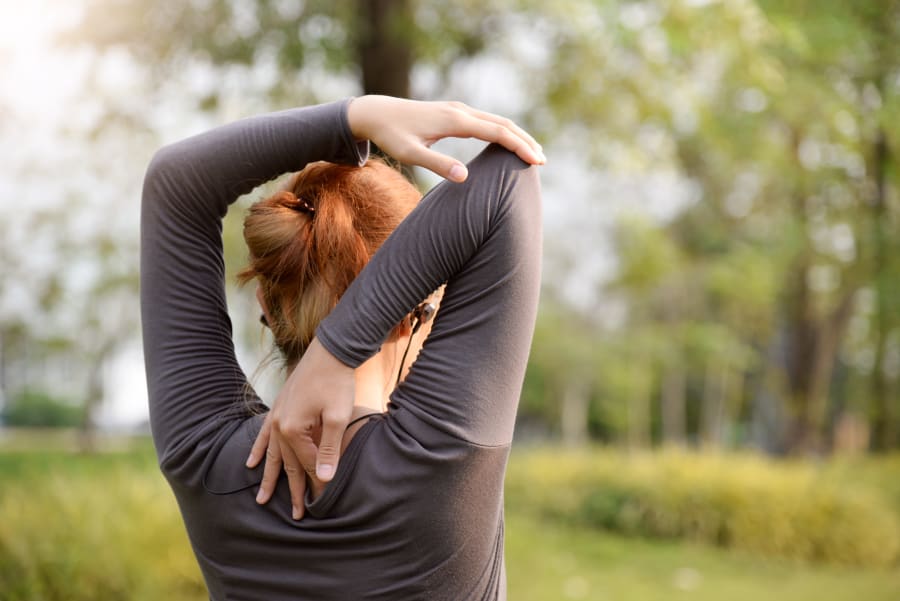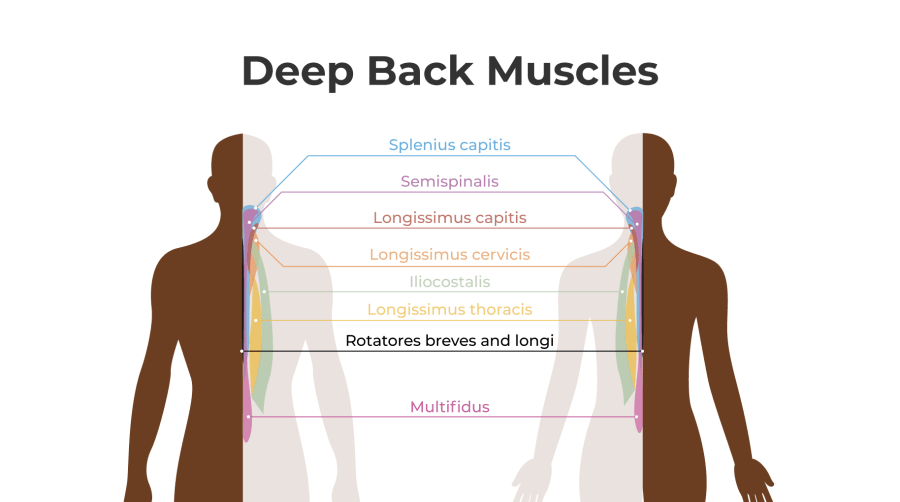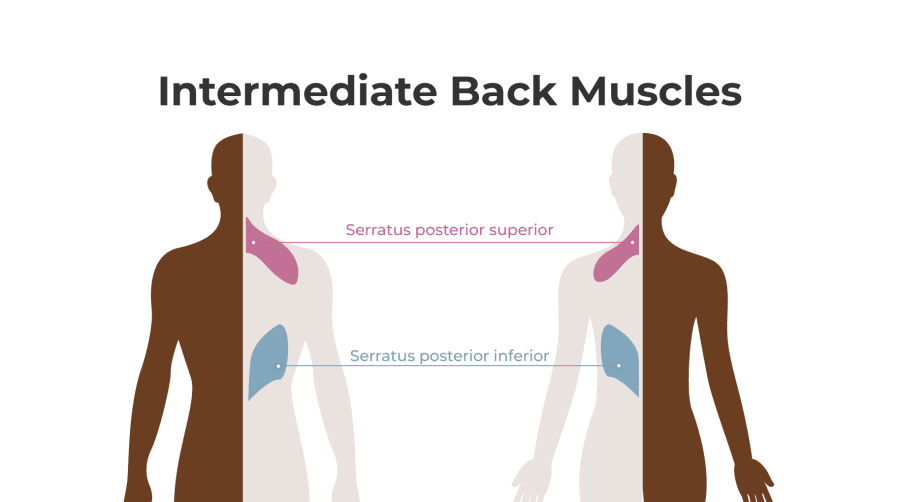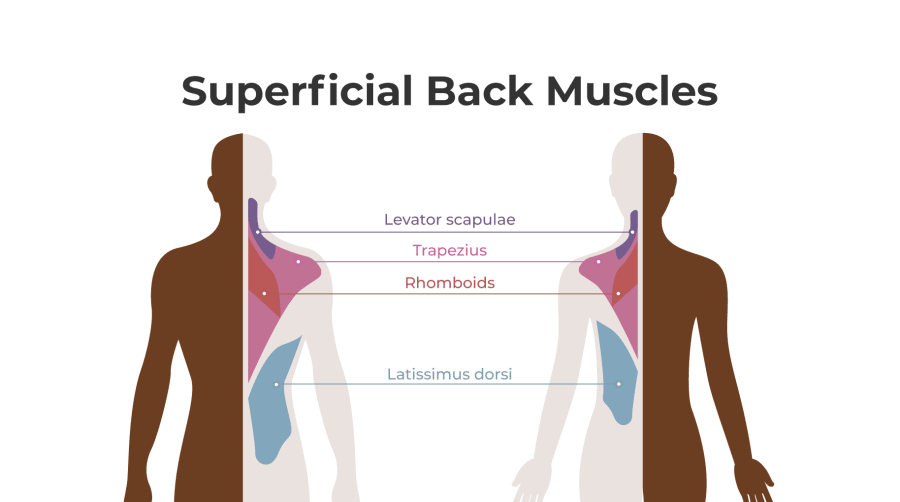Muscles of the Upper Back
Max Frenkel

Back pain can be annoying and limiting. It can be chronic or sudden and can be caused by long-term conditions or one-time injuries. By understanding how your upper back muscles work, you can identify the cause and potentially reduce your pain.
Your back is made up of muscles that help you turn, lean, sit, and stand. They even help your posture! Unfortunately, these muscles can often cause pain when damaged, strained, stretched, or overused. Pain can also occur related to a not back-related condition. Learn about the muscles that make up your back and what might be causing you back pain.
Learn about your muscles and which one might be causing you pain by utilizing the images of back muscles below.
- Deep muscles: Deep muscles are deepest inside your body and are primarily associated with facilitating the movements of your vertebral column, assisting in turning and bending. If you are experiencing deep muscle pain, it could be from a strain.
- Intermediate muscles: Intermediate muscles are located between the deep and superficial muscles and are associated with movements of the thoracic cage or the rib cage. A sprain, strain, or overuse of intermediate muscles may be the culprit of your back pain.
- Superficial muscles: The superficial muscles help your shoulders move and are the closest muscles to the outside of the body. Because their function is to move the outermost part of your body, you are more likely to be in pain from a superficial muscle than an intermediate or deep muscle.
- Trapezius: Included in these superficial muscles is the trapezius, a trapezoid-shaped muscle located along the spine and beginning at the neck. This muscle can easily be strained and if so, turning and tilting your head may be difficult and painful.
- Latissimus dorsi: The latissimus dorsi, another superficial and the largest muscle of the upper body, controls much of your upper body’s movement. It is used in dancing, walking, hiking, or reaching. This is another easy muscle to strain. Frozen shoulder, a syndrome where the shoulder is stiff and difficult to move, is also caused by latissimus dorsi malfunction.
- Levator scapulae: The levator scapulae functions to hold your neck in place. If your neck or upper back hurt, a likely cause is a poor posture resulting in levator scapulae pain or tightness. Relieving this pain may be as easy as improving posture and kneading out the muscle tension, but may require additional attention.
- Rhomboids: The rhomboids assist with posture and control the shoulder blades or scapula. While the pain of this muscle can also be caused by a strain, this muscle is also near-critical nerves, and pain is often caused by those nerves being compressed. Nerve interference is characterized by muscle spasms in the area.
Once you have located the muscles related to your back pain, you can try to understand the cause of the pain. Your upper back may be hurting because of another condition or because of an injury specifically related to your back. Conditions that may cause upper back pain include osteoarthritis, a spinal infection, myofascial pain, lung cancer, scoliosis, or fibromyalgia. However, you may also have suffered a specific injury or damage to your back, which could include a pinched nerve, a herniated disk, little leave shoulder or muscle overuse, or swimmer’s shoulder, which is also called impingement syndrome and is caused by a tendon rubbing on a shoulder blade, caused by overuse of joints. To be 100% sure of the condition in your upper back muscles causing pain, work with a licensed professional for a diagnosis and treatment plan.
Back muscles are complicated and can feel temperamental, but by understanding what they do, you can protect them from future pain and work toward reducing your current irritation.
You Might also Like
Search
Sign up to our newsletter
Follow Us On
Popular
Revisit the GO 2/S Device Setup
How to get started
Finding your upright position
How to find your target upright posture
Calibration
Check out the UPRIGHT GO 2




